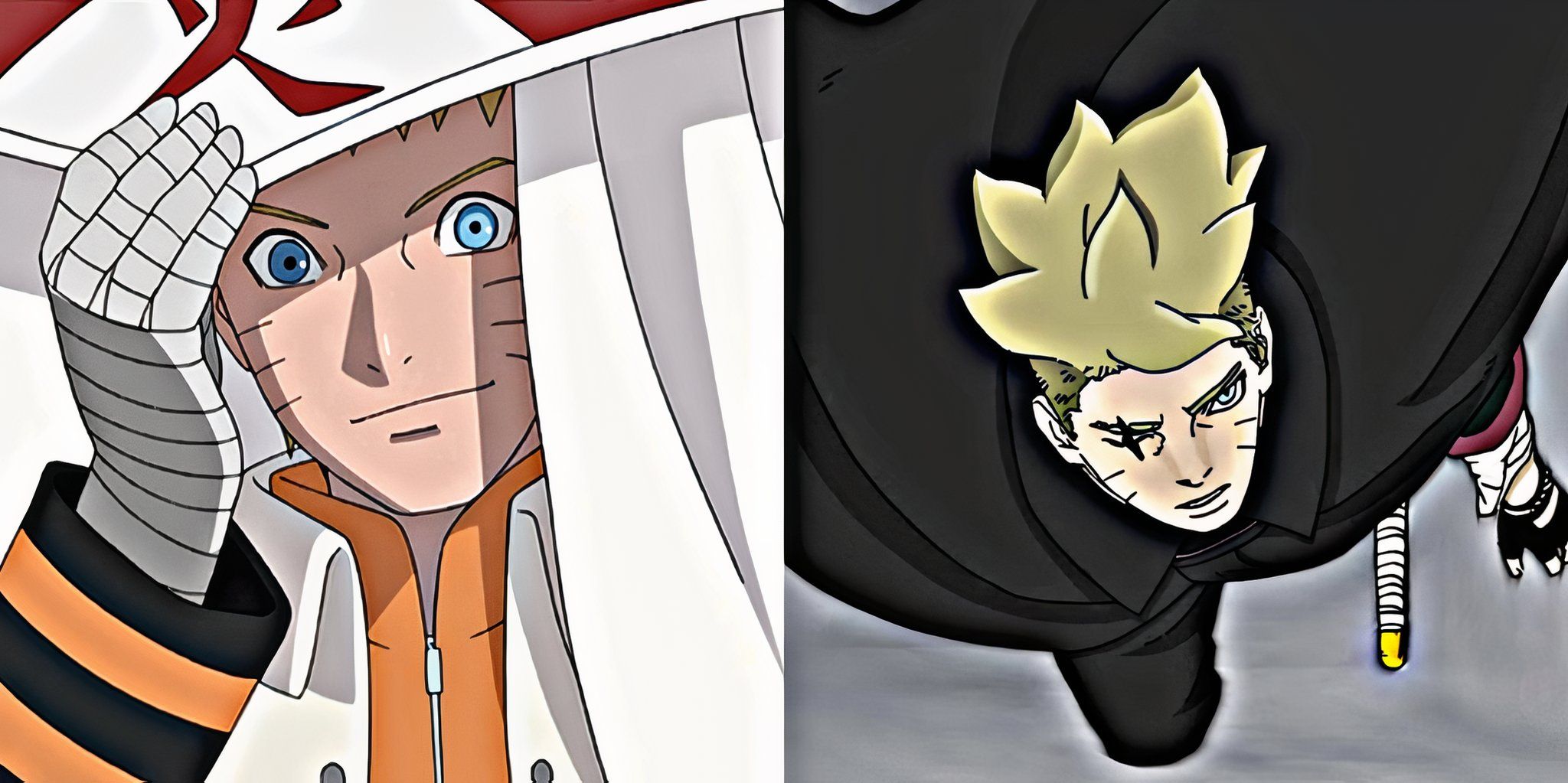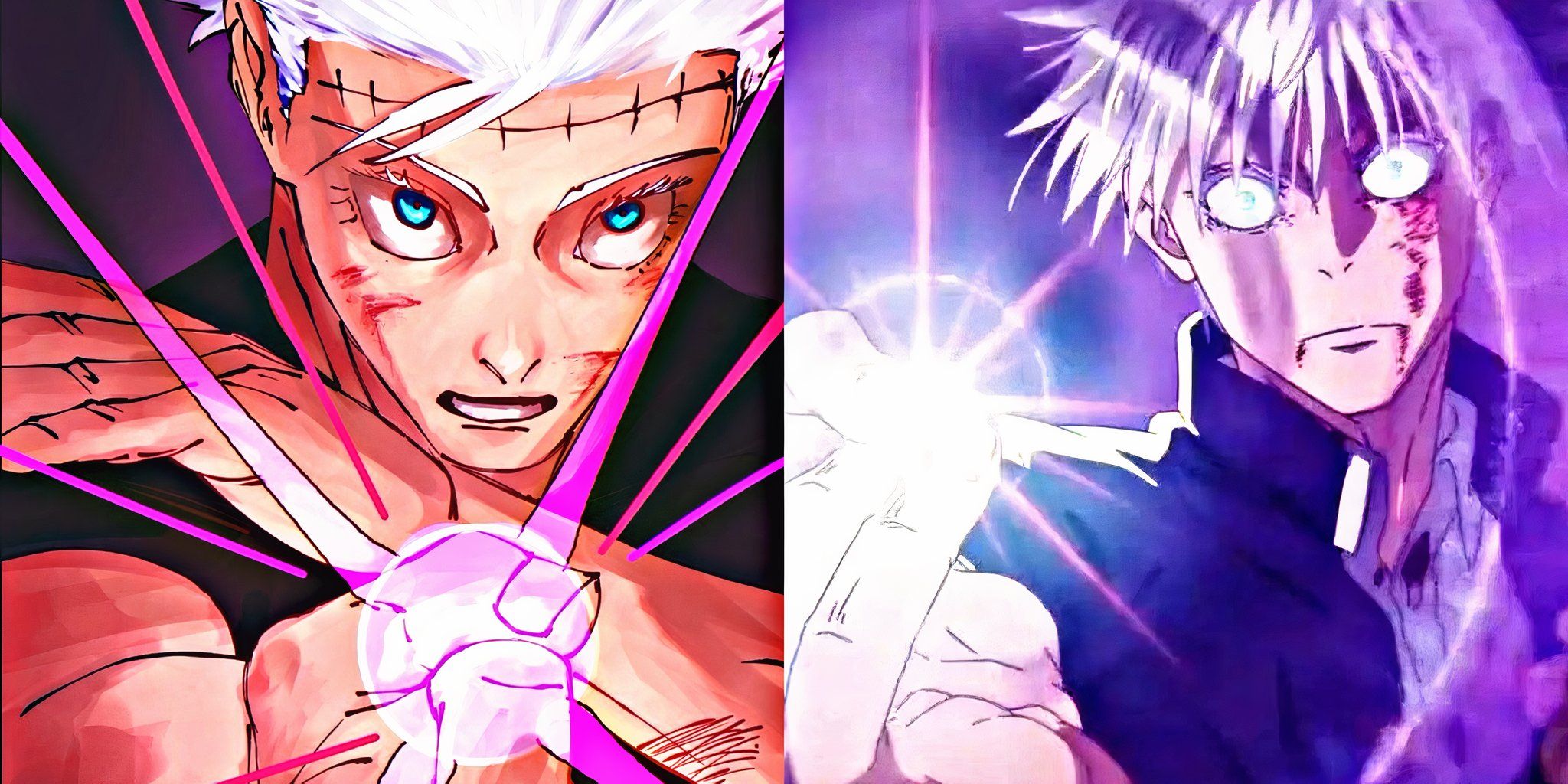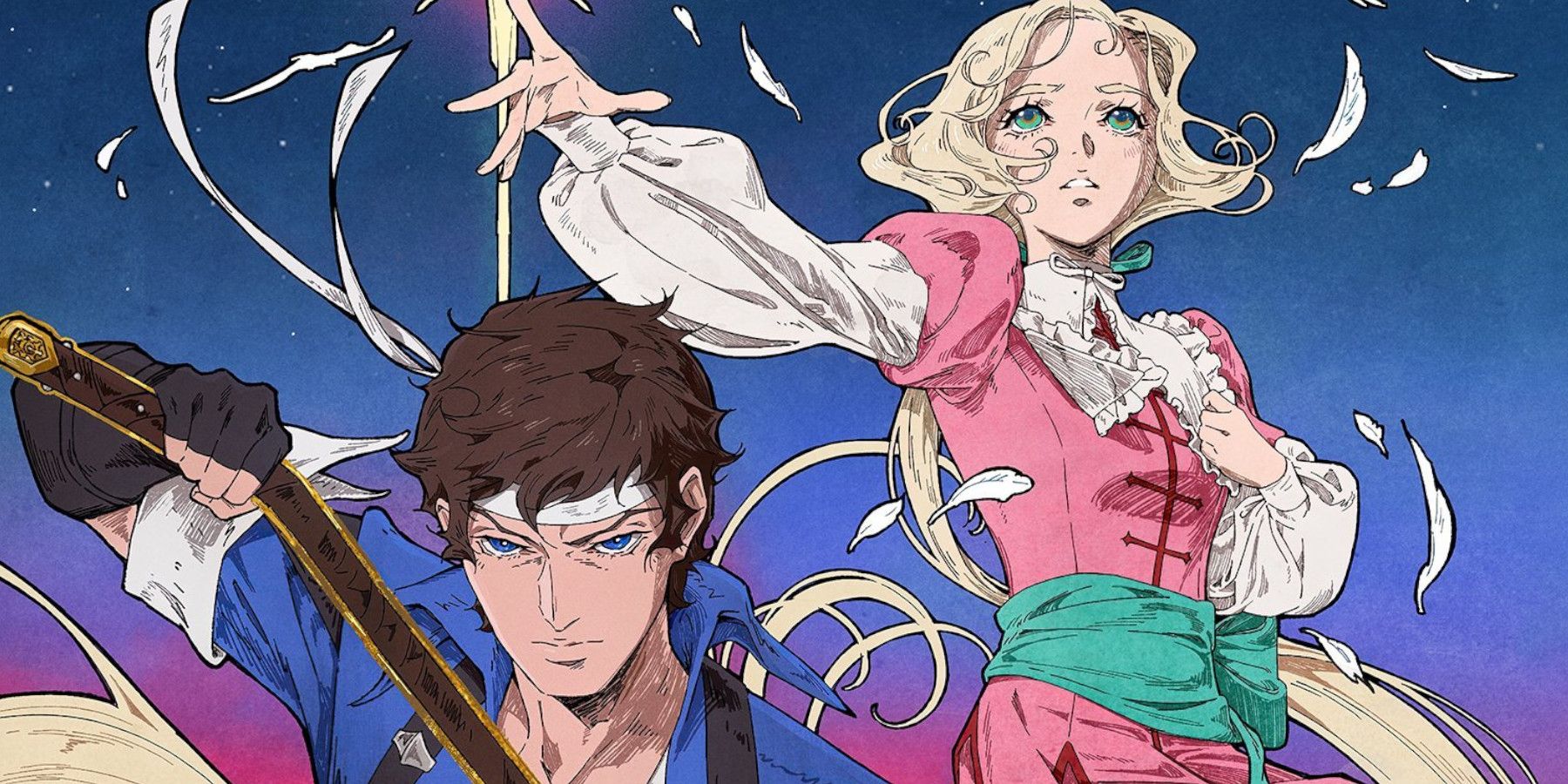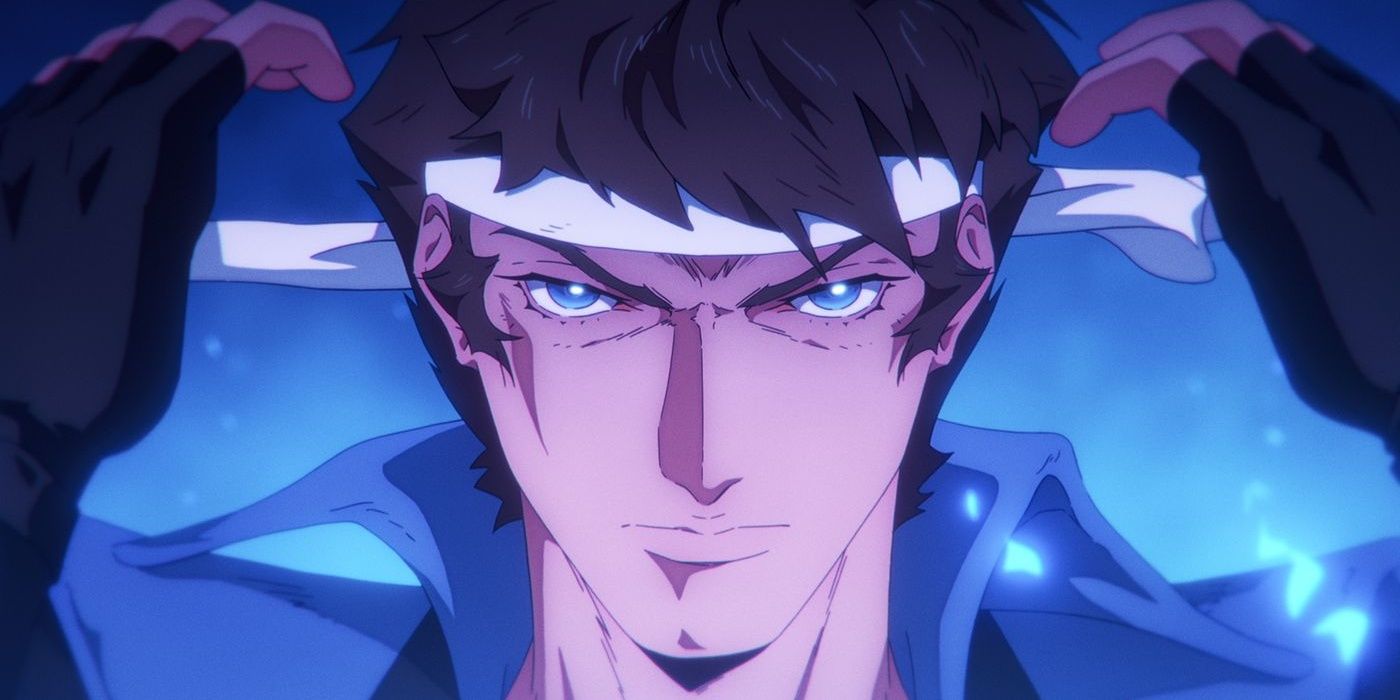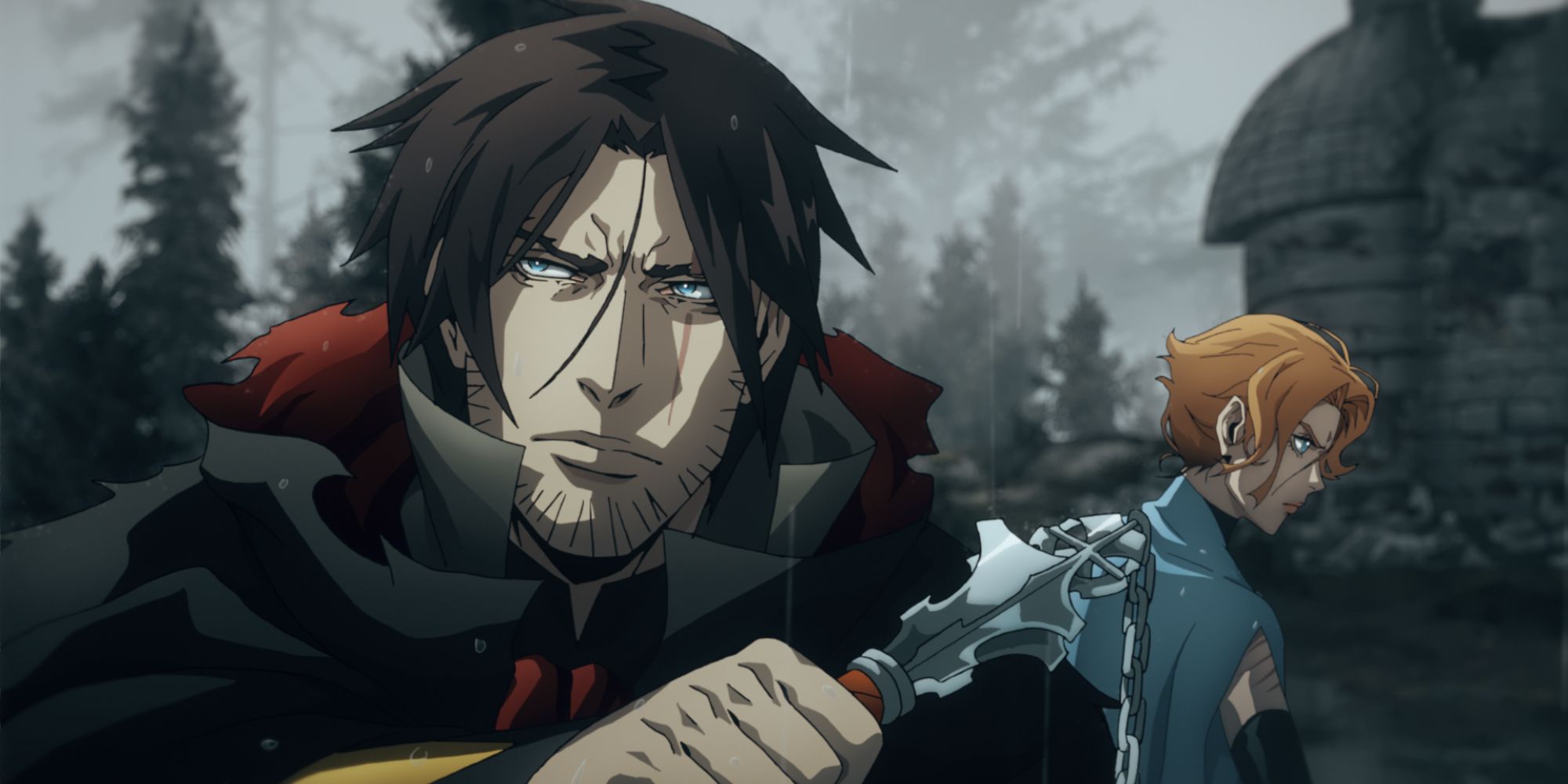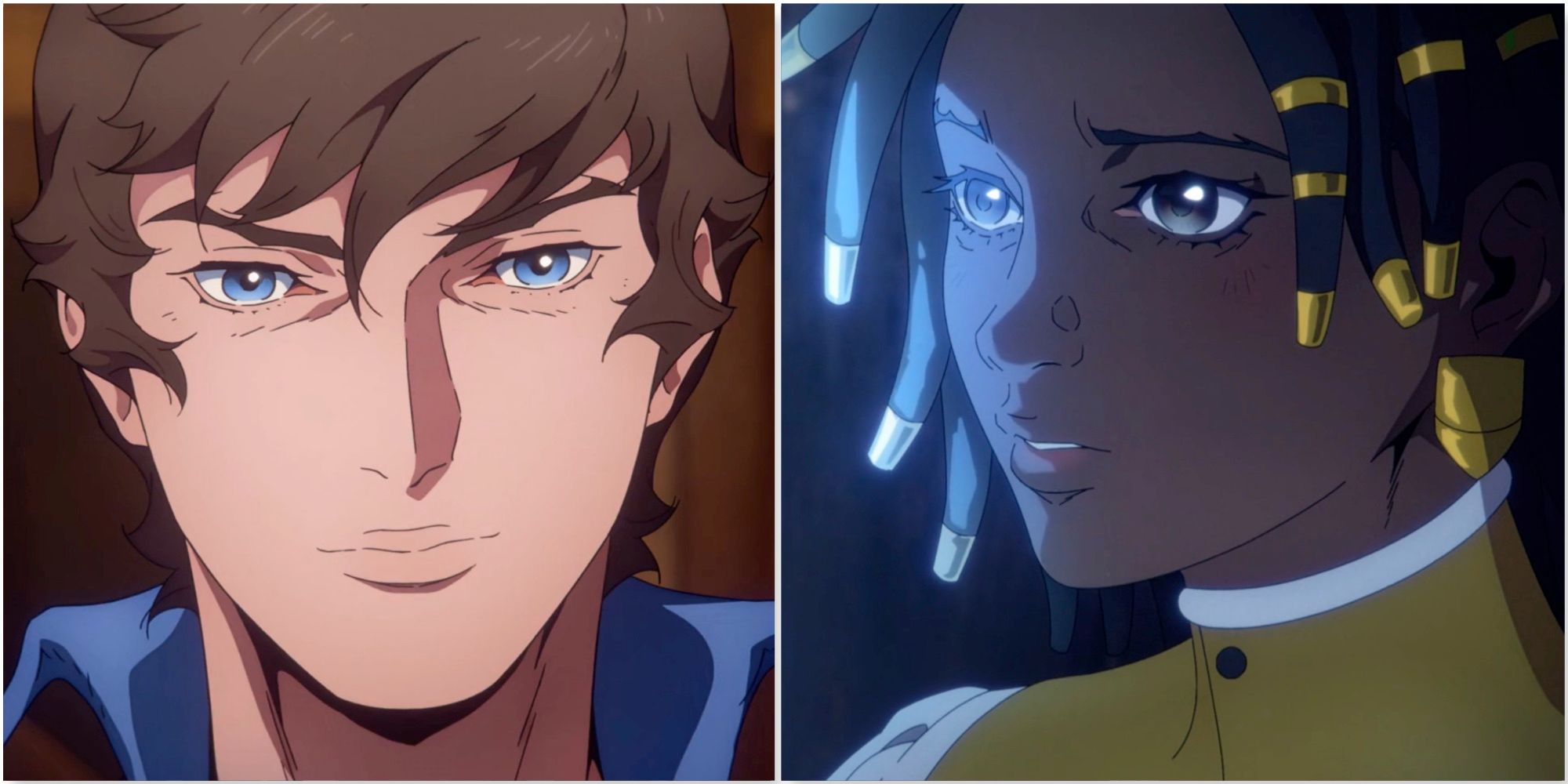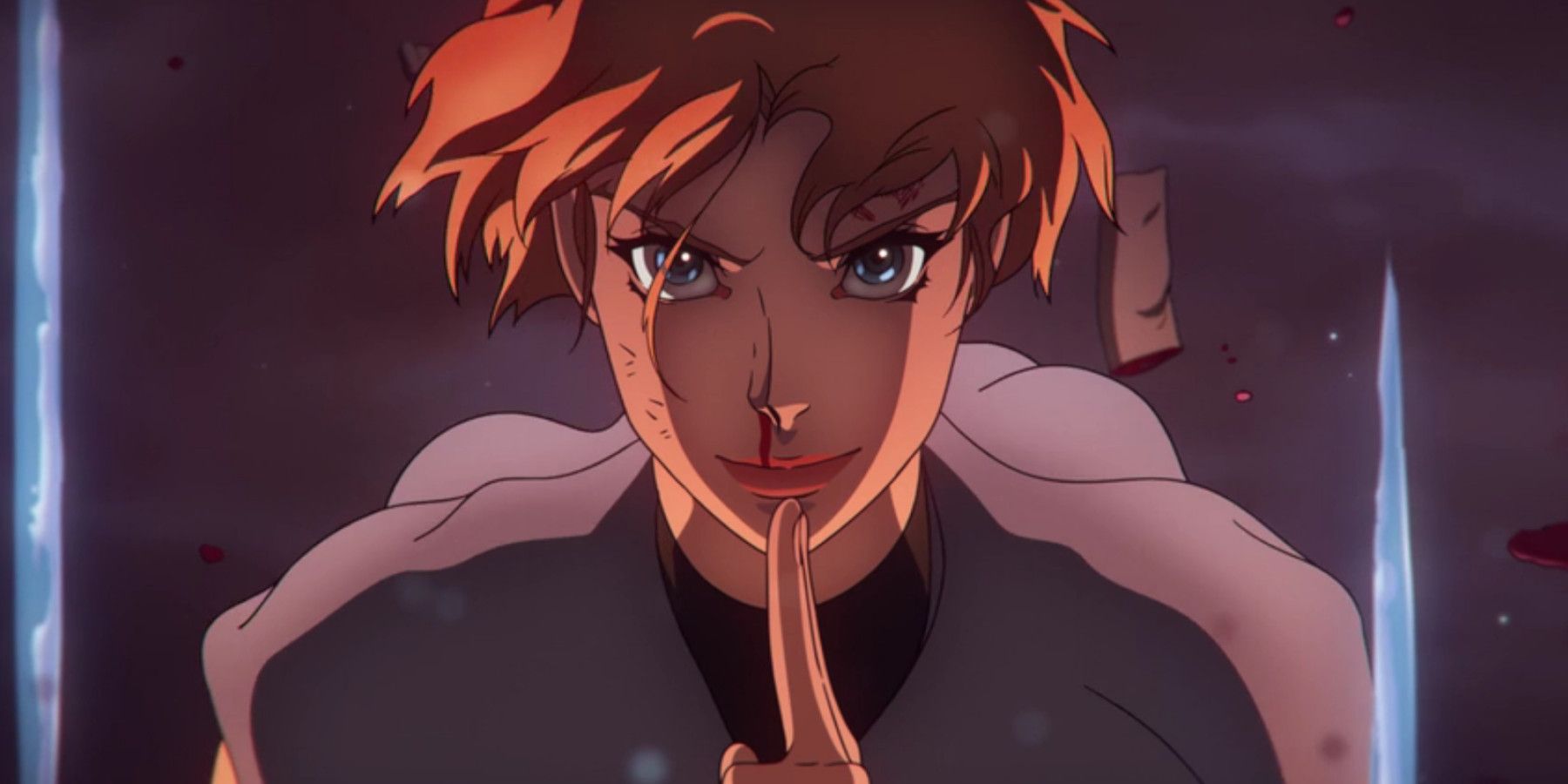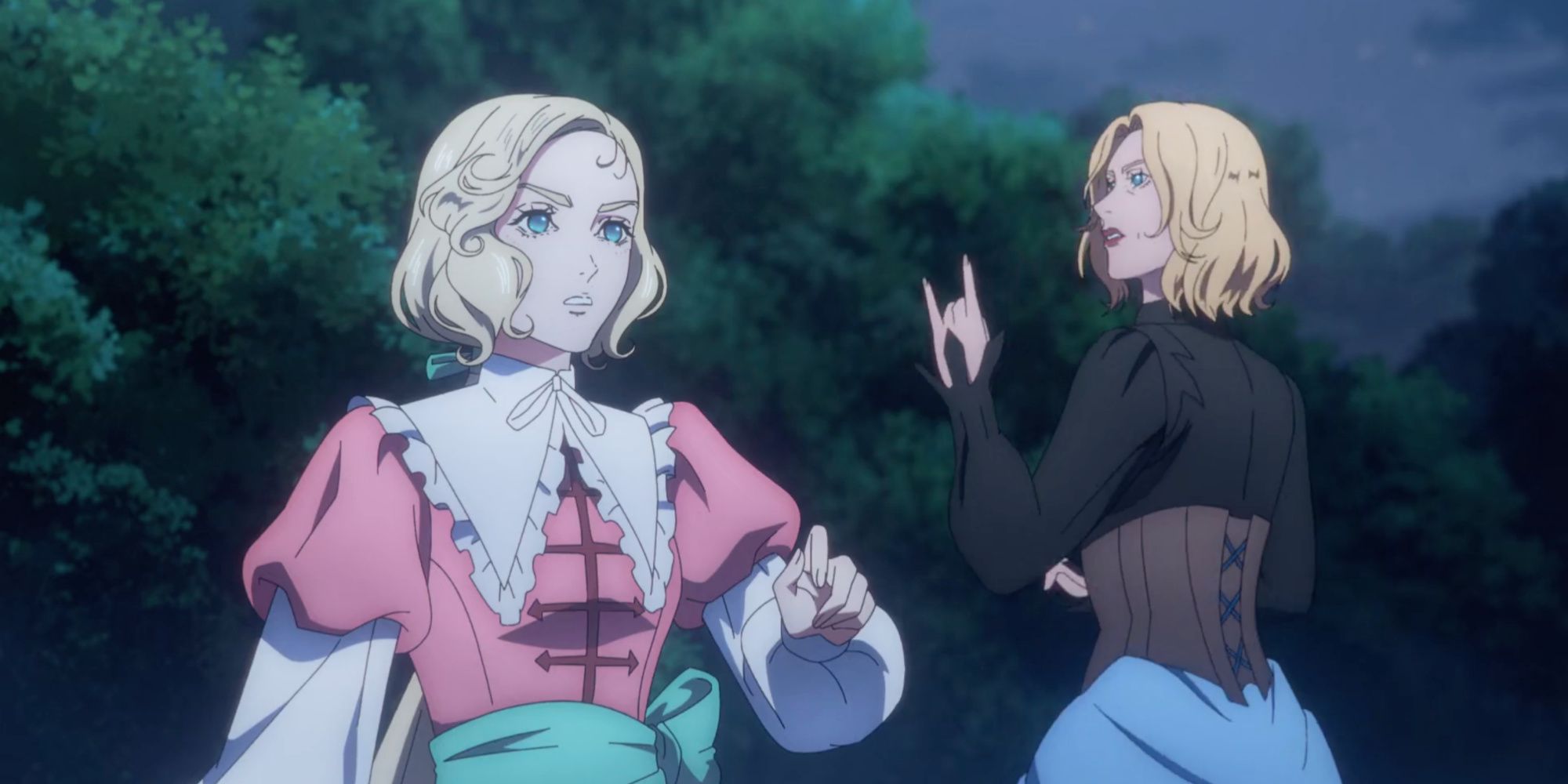Highlights
- Castlevania: Nocturne successfully builds on the foundation set by its predecessor, expanding the world and introducing new characters while maintaining the same captivating narrative.
- The main cast in Nocturne, particularly Richter, Maria, and the new allies, showcase a powerful evolution of abilities and dynamics, adding depth and excitement to the series.
- The visually stunning animation in Castlevania: Nocturne transcends traditional styles, incorporating influences from various cultures and delivering breathtaking fight scenes while preserving the intricate details of the character designs.
Warning: This post contains major spoilers for Castlevania: Nocturne, now streaming on Netflix.
Netflix’s Castlevania accomplished a task that many thought was impossible; making a video game adaptation that wasn’t just competent, but really, really good. Two years following the fourth and final season, Castlevania: Nocturne had the unenviable task of starting something new but with just enough of the old to win over fans, and they impressed yet again.
Written by Clive Bradley, Nocturne sees the return of directing duo Sam and Adam Deats at Powerhouse Animation, with a new story based on the Konami video game series. The story is set during the French Revolution, following a descendant of the Belmont clan, Richter, alongside companion Maria Renard, and a slew of new powerful allies in a fight against a new threat.
Beginning Again
As Joshua McCoy put it in their review of the series, “It’s impossible to avoid comparisons between Castlevania and Nocturne,” and that need not be a limiter for this new series. If anything, it’s fascinating how the narrative retraces the steps of its predecessor, but on a larger scale which wasn’t possible back when the series began.
Just as Trevor Belmont was the last of his family name, Richter begins the series much the same, though the context is different for each of them. Trevor’s loneliness was the result of his family being betrayed by the people they protected, which soured him to the idea of helping anyone, much less killing vampires. Richter’s trauma, on the contrary, was caused directly by a vampire, so he’s all for killing them, even if he’s somewhat directionless beyond that.
Broken down to its most basic elements, Castlevania Season 1 was about Trevor overcoming his doubts and accepting his responsibility as a Belmont to protect the innocent. In the same way, Nocturne’s first season is about Richter overcoming his trauma in order to wield the power necessary to stop evil. What prevents it from feeling like a reskin is the massive expansion of the world and the lessons learned over four seasons of screenwriting that built it.
The beginning of Castlevania was simple, which is a big part of why it worked as an adaptation. In four episodes, there was Dracula, the monsters he commanded, the last of the Belmonts, a magician, and at the very end, Alucard. It laid the foundations and put its characters front and center, and as soon as it got renewed for another season, it expanded exponentially.
There was mythology beyond vampires alone, and not only was magic everywhere, but it was distinct wherever it was found, reflecting the cultures of the people who used it. Castlevania’s showrunners learned quickly that its supporting cast could be just as magnetic as its central leads. As such, characters like Issac, whose complex inner lives made the world feel so much bigger, became fan favorites. This became the source of Nocturne’s strength.
The Next Generation
Central to the first series’ appeal was its grimdark violence. People die a lot in Castlevania and the premiere episode alone was illustrative of the sheer hell facing humanity, which made the protagonists’ victories all the more satisfying. Trevor alone accomplished quite a lot despite possessing no magic and relying on his tools and training.
Even by Season 4, the human characters never felt invincible, but as they leveled up across the series, they proved themselves to be on the same level as their monstrous foes. With Nocturne, the threat has evolved, and so too has the dynamic of the main cast along with their abilities. Most notably, the meta is all about magic, which puts Richter at a serious disadvantage at the start, before his awakening in Episode 6 suddenly triggers flashbacks of a certain magician.
Let’s be real: Sypha had the coolest fight scenes in the original series, and not just because of how powerful her magic was, but how she used it. Elemental magic can be pretty basic in media, but when it's employed as creatively as it was in Castlevania, the audience is reminded why even the basics can be super effective. Richter embodies the very best of Trevor and Sypha, combining close-combat skills with elemental magic that can be offensive and defensive.
At first glance, it felt like Richter and Maria would serve as the Trevor and Sypha of Nocturne - one being the fighter and the other being the caster. However, besides Tera - another speaker magician - few of the other characters have overlapping abilities. Maria employs summoning and Annette can manipulate earth and metal, the latter of which is extra cool for her magic ties into her cultural heritage.
Nocturne’s character roster is the summation of four seasons' worth of world-building to create a team that feels as unique as the protagonists who came before, but even more powerful. As the cherry on top, the season ends with Alucard’s arrival, just as he appeared at the end of the first so that the heroes can have their own resident vampire as well. But all of this would mean far less were it not for the team at Powerhouse Animation stepping up their game.
A Visual Triumph
The longer that the series has gone on, the more ambitious the team has become with its animation techniques, and the more vividly their inspirations have shown. From the beginning, the influence of directors like Yoshiaki Kawajiri and artists like Castlevania's very own Ayami Kojima has been clear to see. As the series continued, though, the visuals took on an identity of their own, continuously blurring lines between preconceived styles of animation.
There's always been this debate about what is and isn't "anime," which typically boils down to national origin or some vague concept of a style befitting the label. Yet, as animation has advanced and its legitimacy as a cinematic art form has been championed, it has become an increasingly international medium. Castlevania's fight choreography, effects animation, and digital effects work bring to mind Japanese, Korean, and Chinese styles interchangeably.
Certainly, there are some low points, as is the case with a lot of TV animation. Sometimes the character acting outside of action scenes can read as stiff. Some would argue that Nocturne's efforts to "look more like anime" have robbed the character designs of a certain level of expression. But it would be a lie to say those characters don't look gorgeous
Nocturne's thin, delicate, almost wispy line art adorns each face with sublime imperfections that convey so much life and emotion to each character. It's a testament to the production team that so little of this detail is sacrificed when the animation kicks it up a notch. Furthermore, there are so many different flavors with which the series unleashes its potential and which allows the artists to express themselves fully.
Castlevania: Nocturne is not simply a great animated series, but a resounding reminder of what the medium is capable of, divorced from the national identities associated with particular styles. It is an inspired work that has proven itself not only narratively gripping, but visually masterful, and only looking to improve. The show might not be perfect, but it and its predecessor are loved for a very good reason; as good as it gets, it's always striving to be better.
